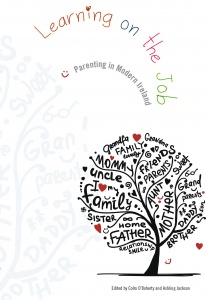Emerging cohabitation patterns in Ireland16 September 2016 | Admin
Halpin and O’Donoghue (2004, p.6), in their analysis of Labour Force Survey data and European Community Household Panel Survey data, conclude that premarital cohabitation is becoming more frequent in Ireland. When they analysed 238 distinct relationship histories in the Irish European Community Household Panel Survey data, they found that, for four out of every five relationships, where premarital cohabitation was a feature of that relationship, marriage followed premarital cohabitation. Premarital cohabitation in Ireland tends to be a feature of younger cohorts and has a much shorter duration than marriage (Halpin and O’Donoghue, 2004). Premarital cohabitation ‘is most often a temporary arrangement found mainly among young urban adults that either dissolves after a relatively short period or leads on to marriage’ (Fahey and Layte, 2007, p.169). The fact that marriage is still occurring, indeed even rising in Irish society, gives credence to the view that marriage is still an important part of a relationship development (Jackson, 2011), but so too is premarital cohabitation. With it, new parenting opportunities are emerging in society. Premarital cohabitation has emerged as an optional pathway in relationship development and may or may not include parenting experiences. Halpin and O’Donoghue (2004) emphasised that cohabiting couples are far more likely than married couples to be childless, though less likely than the never-married. Of the 17,958 births recorded in Census 2011, 6,164 (34%) were registered as outside marriage/civil partnership. Of these, 3,449 births (19%) were to unmarried parents with the same address (Central Statistics Office, 2012b, p.1). According to Reed (2006), there was a close relationship between pregnancy and premarital cohabitation for couples. Reed used a sub-sample of 44 couples who were cohabiting around the time of their child’s birth, from the Time, Love and Cash in Couples with Children Study, a qualitative, longitudinal, intensive interview study of 48 unmarried and 26 married couples who had a child together in 2000. This study is itself a sub-sample of the Fragile Families and Child Well-being Study, which investigates non-marital births in the urban United States. Although all the couples surveyed were living together around the time of their child’s birth, a substantial majority (73%) began their premarital cohabitation experience with a ‘shotgun’ cohabitation, moving in during their first pregnancy together, or just after the child’s birth. For them, premarital cohabitation was not a relationship decision, but instead a response to pregnancy. A study by Gibson-Davis et al (2005), exploring barriers to marriage among unmarried parents, provides an important context for the present analysis. Similar to Reed (2006), their sample draws from the 2000 Time, Love and Cash in Couples with Children Study. Although Gibson-Davis et al (2005) do not limit their sample to cohabiting couples, about three-quarters of their unmarried parents are cohabitees, making the samples quite similar. On the basis of interviews conducted shortly after their child’s birth, Gibson-Davis et al found unmarried parents have a high regard for marriage and would like to marry, yet feel they need to overcome financial obstacles and reach a high level of relationship quality first. Fear of divorce also emerged as an additional barrier to marriage. The authors (Gibson-Davis et al, 2005) also note that unmarried parents view premarital cohabitation as a test for marriage and that children do not feature in their parents’ discussions about marriage. Extracted from Chapter 2: Out with the Old, In with the New: Changing Family Patterns in Ireland by Ashling Jackson in LEARNING ON THE JOB: PARENTING IN MODERN IRELAND, edited by Colm O'Doherty and Ashling Jackson. |
|
 According to the Census of Ireland 2011, cohabiting couples with or without children were the fastest-growing type of family unit (Central Statistics Office, 2012a). Cohabiting couples represented 11.6% of all family units in Ireland in 2006 (Central Statistics Office, 2006b, p.1). By 2011, this had increased by a further 18% (Central Statistics Office, 2012b). The number of children living with cohabiting parents increased from 51,700 in 2002 to 74,500 four years later (Central Statistics Office, 2006b). The majority of cohabiting couples without children (81.7%) were unions in which both partners were single, while in a further 5% of cases, both partners were either separated or divorced (Central Statistics Office, 2006b). Given that divorce was legalised in Ireland in 1997, this is not surprising. Over the 15 years since 1996, the proportion of the population aged 15 years and over who were divorced grew significantly from 0.4% in 1996 (9,787 people) to 2.4% (87,770) in 2011 – an increase of almost 800% over the period (Central Statistics Office, 2012b). It may be the case that marriage deferral, rather than ‘marriage avoidance’ (Fahey and Layte, 2007, p.169), is a more appropriate description of what has been happening in the Irish context.
According to the Census of Ireland 2011, cohabiting couples with or without children were the fastest-growing type of family unit (Central Statistics Office, 2012a). Cohabiting couples represented 11.6% of all family units in Ireland in 2006 (Central Statistics Office, 2006b, p.1). By 2011, this had increased by a further 18% (Central Statistics Office, 2012b). The number of children living with cohabiting parents increased from 51,700 in 2002 to 74,500 four years later (Central Statistics Office, 2006b). The majority of cohabiting couples without children (81.7%) were unions in which both partners were single, while in a further 5% of cases, both partners were either separated or divorced (Central Statistics Office, 2006b). Given that divorce was legalised in Ireland in 1997, this is not surprising. Over the 15 years since 1996, the proportion of the population aged 15 years and over who were divorced grew significantly from 0.4% in 1996 (9,787 people) to 2.4% (87,770) in 2011 – an increase of almost 800% over the period (Central Statistics Office, 2012b). It may be the case that marriage deferral, rather than ‘marriage avoidance’ (Fahey and Layte, 2007, p.169), is a more appropriate description of what has been happening in the Irish context.